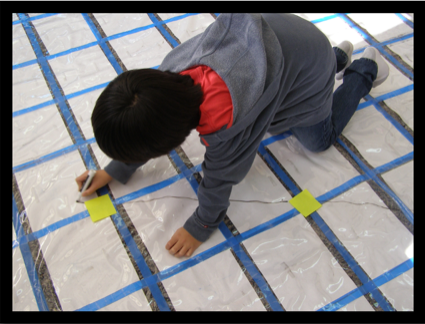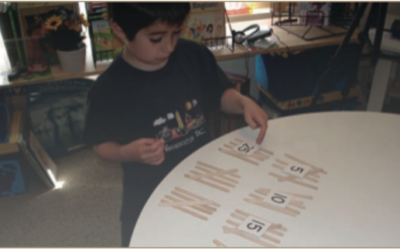If you are a classroom teacher, you know how hard it can be to keep children’s attention for long periods of time, especially when seated at their desks. Why not get them out of their desks and moving? Besides being fun, there are a lot of added benefits to both the brain and the body.
Incorporating movement in the curriculum is beneficial because:
- It engages the whole brain in the learning
- It helps to develop social skills and increases bonding in the classroom
- It increases motivation
- It provides necessary novelty and change for the brain
- It focuses the brain to help improve concentration
- It wakes up the body when it is getting tired and keeps the brain awake and alert
- It prevents students from being overwhelmed by content
- It provides students a new perspective to the room
- It can help prevent negative effects from too much sitting
- It “awakens and activates many of our mental capacities. Movement integrates and anchors new information and experiences into our neural networks” (Hannaford 1995, p. 96)
- It has an interdependence with the body’s learning systems
- It promotes an increase in test scores (Sallis, et al 1999)
- It prepares the brain for learning by getting the hemispheres to work together and increasing blood flow to the brain
- It improves cerebrospinal fluid flow
- It allows the brain to take a break and allows it time to process and consolidate information
- It allows more information to be absorbed
- It increases retention and allows students to recall the information more efficiently
- It provides a rich, multi-sensory experience for learning, which alters brain structure
- It promotes implicit learning
- It can target the root issues of disabilities such as dyslexia, dyspraxia, dyscalculia and ADHD, and increase reading, writing fluency, eye movement, cognitive skills, dexterity, and balance (Blythe 2009; Ratey 2008)
- It promotes optimal learning since the student is actively involved in exploring physical sites and materials (Gardner 1999, p. 82 cited in Jensen)
- It, when provided through distinct patterns, can supply targeted integration to weak areas of the brain
- It stimulates developing brain growth and prevents deterioration of older brains
- It creates neuropathways that connect the cerebellum to the pre-frontal cortex, which coordinates thought, attention, emotions, and social skills
- It increases communication of the neurons by myelinating brain cells causing impulses to fire faster
- It can increase the production of neurotrophins (natural nerve growth factors)
- It increases the density of the neurons in the frontal lobes, which is linked to good academic performance and executive functioning
- It balances the neurotransmitters in the brain and can stimulate the release of noradrenaline and dopamine, responsible for good feelings, therefore can act as a mood regulator and a good way to treat depression (Babyak et al 2000; Jensen 2000)
- It produces proteins that travel through the bloodstream to our brain which are responsible for making new brain cells and growing dendrites on neurons (rats that were taught complex motor skills increased their production of BDNF 35%) (Ratey 2008)
- It not only affects the motor-sensory areas of the brain, but also in the hippocampus, a structure involved in learning, which organizes, sorts, and processes the incoming information before sending it to the cortex for long-term storage (Brink, 1995)
- It creates circuits, which can be used by the thinking areas of the brain (such as the neurons grown by learning to play the piano are used for leaning math) (Ratey 2008)
- It adds an emotional context to what is being learned because all sensory stimuli passes through the limbic system, the emotional center of the brain, before proceeding to the cortex (Blomberg & Dempsey 2008)
- It releases acetylcholine across synapses of activated neurons which stimulates and attracts dendritic growth (Hannaford 1995)
- It is fun!
––This if from my book: Movement Makes Math Meaningful: Away from the Desk Math Lessons Aligned with the Common Core, pages 8-10.





0 Comments